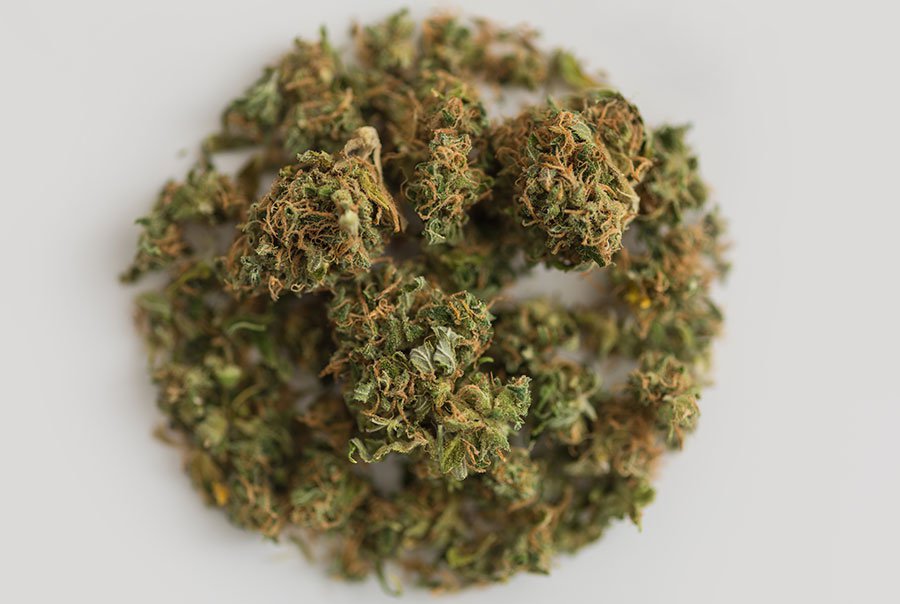.png)
Dabbing has gained popularity as a method of cannabis consumption, particularly among experienced users seeking stronger and quicker effects. This technique involves vaporizing cannabis concentrates, which are significantly more potent than traditional flower.
People turn to dabbing for a range of reasons, from symptom relief to flavor appreciation, but the practice also brings certain health and safety concerns. For those considering options like a personalized inpatient rehab, understanding what dabbing entails, along with its potential risks and advantages, is an important first step in making informed choices.
Dabbing: An Overview
Dabbing refers to the use of cannabis concentrates, which are vaporized on a heated surface and inhaled. This is done using a dab rig or a specialized pen designed for concentrate use. Unlike conventional cannabis, these concentrates contain significantly higher levels of THC or CBD. The heated element, often quartz, ceramic, or titanium, quickly vaporizes the concentrate, resulting in a strong, fast-acting vapor.
Because the effects are felt almost instantly, dabbing is often chosen by those seeking rapid relief. However, its strength requires cautious use, especially for newcomers or individuals with low tolerance, as it can lead to unwanted side effects such as dizziness or cognitive fog.
Benefits of Dabbing
One of the most notable advantages of dabbing is its speed. It delivers cannabinoids to the bloodstream faster than methods like edibles or tinctures, which need to pass through the digestive system first. This makes dabbing a viable option for those who need immediate relief from conditions like chronic pain, nausea, or anxiety.
Users also value the precision with which they can manage their intake. With the right setup and concentration, the experience can be fine-tuned to suit personal needs. This level of control and efficiency has helped make dabbing an appealing alternative for medicinal users as well as those with more specific consumption preferences.
Risks Associated With Dabbing
Although dabbing offers benefits, it also comes with notable risks. Using high heat sources, such as torches or electronic nails, increases the likelihood of burns or other injuries if handled carelessly. More concerning are the health effects of consuming highly concentrated cannabis. Products can contain THC levels exceeding 80%, which may cause anxiety, paranoia, or an elevated heart rate in some users.
There's also the issue of quality control. Poorly manufactured concentrates might contain residual solvents, pesticides, or other harmful substances if not processed correctly. For these reasons, it's vital to use only well-tested products and follow safe practices to reduce potential harm.
How to Dab Properly
Starting with clean, reliable equipment is key to a safer experience. A well-maintained rig and a consistent heat source are necessary for vaporizing concentrates effectively. After heating the nail to the right temperature, allowing it to cool slightly helps prevent the concentrate from burning, which can affect both taste and safety.
A dab tool should be used to place a small portion of concentrate onto the nail while inhaling smoothly. Rotating the tool ensures full vaporization. Users are encouraged to start with small amounts, especially if they are unfamiliar with the strength of a new product, and to increase only when comfortable.
Types of Dabbing Concentrates
Different cannabis concentrates provide a range of experiences based on their texture, flavor, and strength. Wax is soft and easy to handle, offering strong effects and a smooth finish. Shatter is brittle and translucent, known for its purity and strength. Live resin, made from frozen plants, maintains a more vibrant flavor profile, appealing to users who appreciate aroma and taste.
Budder has a rich, creamy consistency, making it simple to apply and pleasant to use. Each type delivers its own unique qualities, allowing users to choose based on what they find most effective or enjoyable.
Dabbing Vs. Other Consumption Methods
The differences between dabbing and other forms of cannabis use are significant in both effect and experience. Dabbing produces quicker and often stronger results than smoking or ingesting cannabis. This speed is largely due to how the cannabinoids are absorbed, directly through the lungs instead of being processed through the digestive system. For users looking for a sharper flavor, dabbing is also preferred, as it preserves more of the terpenes responsible for aroma and taste.
On the downside, the high potency can make dosage difficult to control for those new to concentrates. Understanding these distinctions is useful for deciding which method best matches individual needs or health goals.
Related Topics:



